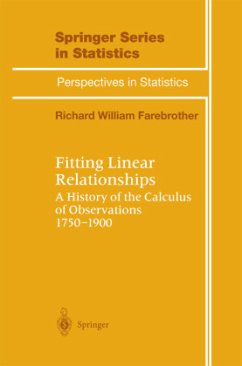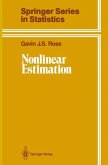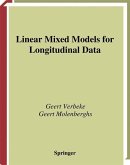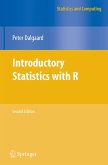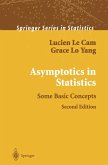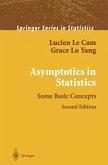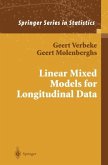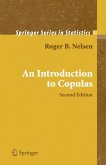This book is intended for students of mathematical statistics who are interested in the early history of their subject. It gives detailed algebraic descriptions of the fitting of linear relationships by the method of least squares (L ) and the related least absolute 2 deviations (L ) and minimax absolute deviations (Loo) procedures. These traditional line J fitting procedures are, of course, also addressed in conventional statistical textbooks, but the discussion of their historical background is usually extremely slight, if not entirely absent. The present book complements the analysis of these procedures given in S.M. Stigler'S excellent work The History of Statistics: The Quantification of Uncertainty before 1900. However, the present book gives a more detailed account of the algebraic structure underlying these traditional fitting procedures. It is anticipated that readers of the present book will obtain a clear understanding of the historical background to these and other commonly used statistical procedures. Further, a careful consideration of the wide variety of distinct approaches to a particular topic, such as the method of least squares, will give the reader valuable insights into the essential nature of the selected topic.
Hinweis: Dieser Artikel kann nur an eine deutsche Lieferadresse ausgeliefert werden.
Hinweis: Dieser Artikel kann nur an eine deutsche Lieferadresse ausgeliefert werden.
From the reviews:
JOURNAL OF THE AMERICAN STATISTICAL ASSOCIATION
"Farebrother gives the details of the algebraic development of various procedures, striving to make them more understandable by modernizing and standardizing the notation as much as possible without departing too far from that used by the original developers. ...Readers interested in the history...will be gratified by the helpful historical and bigraphical notes...I thoroughly enjoyed reading this book, and recommend it without hesitation to readers interested in the subject."
JOURNAL OF THE AMERICAN STATISTICAL ASSOCIATION
"Farebrother gives the details of the algebraic development of various procedures, striving to make them more understandable by modernizing and standardizing the notation as much as possible without departing too far from that used by the original developers. ...Readers interested in the history...will be gratified by the helpful historical and bigraphical notes...I thoroughly enjoyed reading this book, and recommend it without hesitation to readers interested in the subject."

